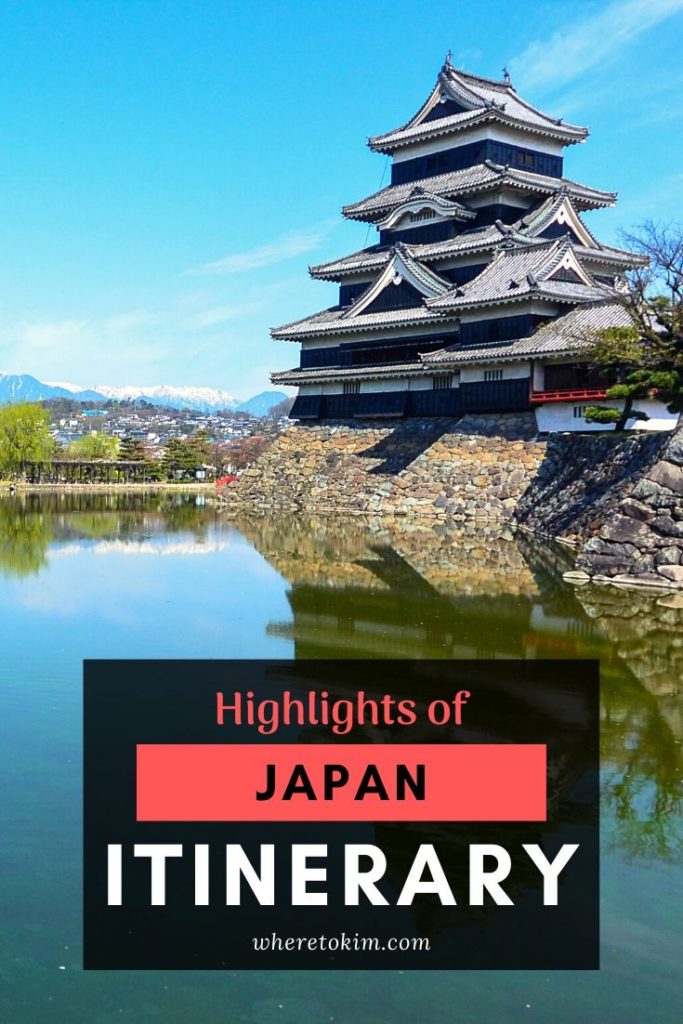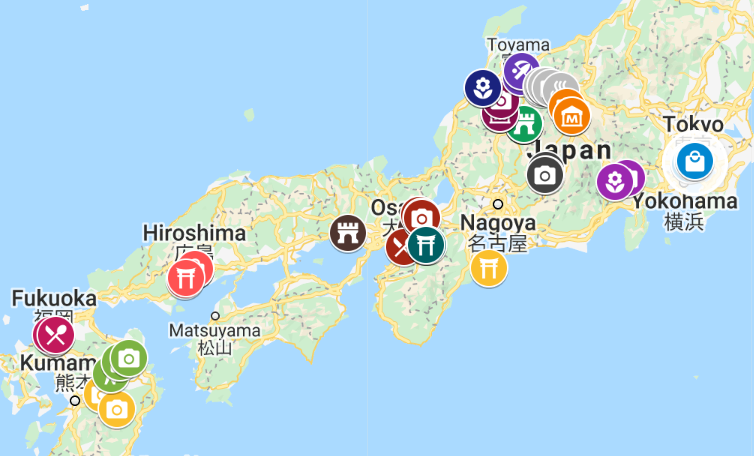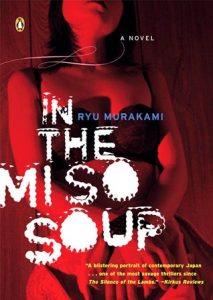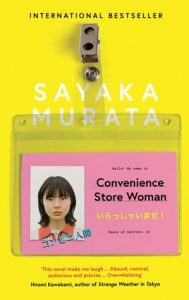Catch the cherry blossom and April festival season with this three weeks itinerary for Japan. You’ll see all the highlights of Japan, including Tokyo, Himeji Castle, and the Hiroshima war memorial.
Japan is a beautiful country with many interesting things to see. There are many reasons for visiting Japan: are you interested in the high tech culture, the samurai history, or the aesthetic parks? Or do you want to combine all of these in the itinerary you’re planning?
If you’re traveling to Japan for the food, then you’re lucky: you can visit any part of Japan and enjoy delicious meals.
This itinerary shows you the highlights of Japan. Basically, the must-see sights every first-time visitor to Japan wants to see, for example, the Hiroshima war memorial and Himeji Castle, but also the beautiful temples in Kyoto and the old trade route in the Nagiso Valley.
If you’ve already seen the Highlights of Japan, then you can check out my other Japan itinerary, focusing on the islands Kyushu and Yakushima in the southern part of Japan.
The right timing
Every season offers its own unique highlights. This itinerary is set up around an April visit, and more specifically: to get to every city just in time to see the festivals and be in the right part of the country to see cherry blossoms bloom. You can’t go too early, because then you’ll miss the festivals and you can’t go too late because you’ll miss the cherry blossoms in this part of Japan.
If you time your itinerary right you can see:
- Cherry blossoms for the duration of your journey
- Takayama Spring Festival
- Alpine route (with the snow wall)
- Fuji Shibazakura Flower Festival
- The Highlights of Japan in three weeks
For me, 1 April 2015 was the right starting date for this Highlights of Japan itinerary as I was in Takayama for the spring festival, did the alpine route in the first week after it opened, and caught the early stages of the flower festival near Mount Fuji.
When you’re planning your own itinerary, I recommend starting with the date the Alpine route opens for visitors. After that, you check the dates of the festivals in Takayama and near Mount Fuji and plan the days in between. In front of this part of your itinerary, you add fourteen days for the first part of the trip (or less if you want a shorter itinerary).
If you’re traveling to Japan in another season you’re less time-bound and can plan your trip more freely.
Japan itinerary outline
- Tokyo: Day 1
- Hamamatsu: Day 2
- Himeji: Day 3
- Fukuoka: Day 4
- Aso: Day 5 – 6
- Yufuin and Beppu: Day 7 – 8
- Hiroshima: Day 9
- Osaka and Kyoto: Day 10 – 11
- Nakatsugawa: Day 12 – 13
- Takayama: Day 14 – 16
- Toyama: Day 17
- Omachi Onsen: Day 18
- Matsumoto: Day 19 – 20
- Fujikawaguchiko: Day 21 – 22
- Tokyo: Day 23
Practical information including transport info and detailed budget.
To shorten your trip, you can take days off your stay in Fujikawaguchiko, Matsumoto, and Takayama.
Japan itinerary map
You can find all the places mentioned in this itinerary in my Highlights of Japan Google map.
Tokyo
Traveling time: 1 hour 20 minutes by train and subway from the airport to the hotel
Day 1: Shinjuku Gyoen, Shinjuku, Kabukichō
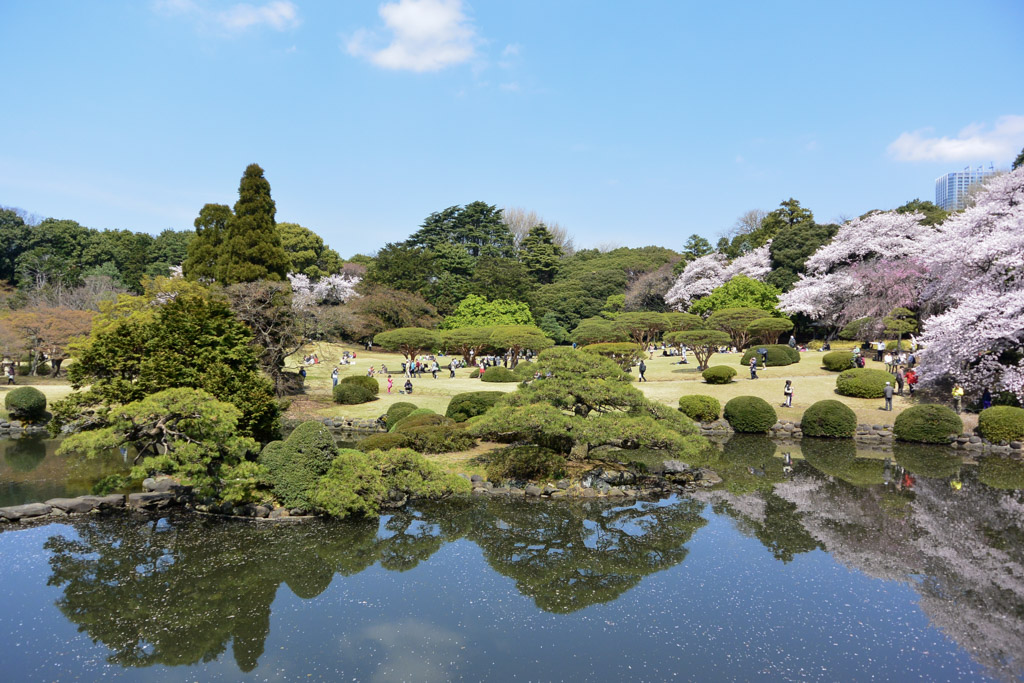
The first day of your trip. After your arrival at Narita or Haneda airport, pick up your Japan Rail Pass at the JR counter. This might take some time (1 – 2 hours waiting time in April 2015). Alternatively, you can pick your pass up the next day at Shinjuku Train Station and pay for a train ticket to Shinjuku separately.
Take the train from the airport to Shinjuku train station (about an hour). Shinjuku is one of the busiest train and subway stations in Japan: if you can handle Shinjuku, then the rest of your Japan itinerary will be a blast. And if Shinjuku proves a challenge, don’t worry, you’ll soon get the hang of it. Every other station on this trip will be much easier. On my first roundtrip in Japan, I had trouble navigating Shinjuku (and finding the exit) on the day I arrived in Japan but on my second trip to Kyushu and Yakushima, I navigated the station with ease.
Head to your hotel first to check in and then walk to Shinjuku Gyoen for a relaxing afternoon in the park. If you are visiting in April: Shinjuku Gyoen is one of the prime spots for Sakura (cherry blossom) watching. And a beautiful park at that. Around noon you will see many office workers having a picnic in the park, which ended up being a very iconic sight for every park visit in Japan.
One of my favorite things to do in April in Japan is to watch Japanese people marveling at Cherry Blossom. After returning home, I paid more attention to the cherry blossom trees in my country. I stood under them for a few minutes enjoying their beauty and taking pictures. I was the only one.
When evening falls, head to the big shopping area northeast of Shinjuku station to do some shopping and be impressed by the huge buildings with neon signs on them. This area is brilliant at night: vibrant, colorful, and fun to explore. In Kabukichō you can see the ‘red-light district’. Don’t worry though: it is a very light version, mainly for tourists. Unless you go in, you won’t see anything other than some neon signs and billboards.
Where to eat in Shinjuku
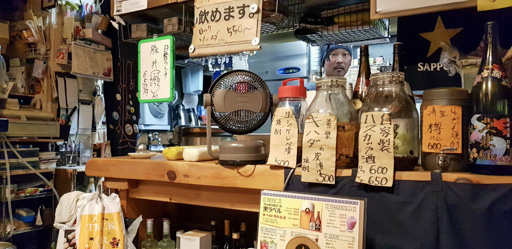
Ainu restaurant Harukoro: a very small restaurant with nice ambience and good food. The food is from the Ainu (indigenous people of Hokkaido) cuisine.
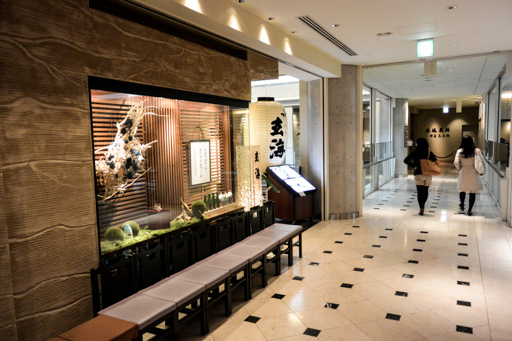
Tonkatsu at Katsukura (Takashimaya 14F): the best tonkatsu I had in my two trips to Japan.
Where to stay in Tokyo
I recommend staying in the Shinjuku neighborhood the first time you visit Tokyo. The location is great for first-time visitors and you will be within walking distance from many interesting sites like Kabukichō and Shinjuku Gyoen. The nearby Shinjuku train and subway station is well connected and will get you to other parts of Tokyo quickly. From here you can also take the train to many other cities nearby.
If you are looking for a budget / mid-range hotel I recommend Hotel Wing International Premium Tokyo Yotsuya, which is only a few minutes’ walk from the park Shinjuku Gyoen. Almost opposite the hotel is the subway exit of Yotsuya-sanchome, one stop away from Shinjuku train station, but you can easily walk from the train station to the hotel. The hotel is clean and the rooms are pretty spacious for a Japanese hotel.
I’d also like to give a non-recommendation here: my second time staying in Shinjuku I rented a room at Royal Hotel Shinokubo. This hotel lies in a great area (a vibrant Korea town), probably the area I enjoyed staying at the most in Tokyo but caused me some inconveniences. For one: there is no elevator taking you from street level to the reception of the hotel. Normally I don’t mind this very much, but at the end of my roundtrip my luggage was really heavy. But more importantly, the hotel room was very stuffy with lots of dust (irritating my airways) and I think there were bugs in the bed that caused itching for weeks.
Other than that, the area around Shin-Okubo subway station is a great place to stay! There are many interesting restaurants and stores selling souvenirs, like the Don-Quijote. The area around Okubo-dori is lots of fun at night.
Tip: Japanese hotel rooms
If this is your first visit to Japan please take note of the following: Western-style rooms in Japanese hotels are tiny. With a king or queen-sized bed, the walls will be almost directly against your bedposts. Any other double bed is only a little bigger than a single bed. It will be hard to store your luggage.
I recommend renting a twin bedroom if you want a Western-style room. This will give you some breathing room. Alternatively, you can rent a Japanese-style room. These will feel much more spacious as there are no beds taking up most of the space in the room. It will also be much easier to store your luggage.
For solo travelers, Japan is a great destination as they offer single-person rooms in many cities for a lower price than double/twin rooms. You can also try their famous capsule hotels that often come with spa access included. But only if you can handle confined spaces…
What to read in Tokyo
Ryu Murakami - In the Miso Soup
An American tourist touring Tokyo’s nightlife. If you’re going to Kabuchiko in Tokyo, don’t skip this one.
It is just before New Year’s. Frank, an overweight American tourist, has hired Kenji to take him on a guided tour of Tokyo’s sleazy nightlife on three successive evenings. But Frank’s behavior is so strange that Kenji begins to entertain a horrible suspicion: that his new client is in fact the serial killer currently terrorizing the city. It isn’t until later, however, that Kenji learns exactly how much he has to fear and how irrevocably his encounter with this great white whale of an American will change his life.
Sayaka Murata - Convenience Store Woman
A must-read if you also hop in and out of convenience stores when traveling in Japan (and other Asian countries).
Keiko Furukura had always been considered a strange child, and her parents always worried how she would get on in the real world, so when she takes on a job in a convenience store while at university, they are delighted for her. For her part, in the convenience store she finds a predictable world mandated by the store manual, which dictates how the workers should act and what they should say, and she copies her coworkers’ style of dress and speech patterns so she can play the part of a normal person. However, eighteen years later, at age 36, she is still in the same job, has never had a boyfriend, and has only few friends. She feels comfortable in her life but is aware that she is not living up to society’s expectations and causing her family to worry about her. When a similarly alienated but cynical and bitter young man comes to work in the store, he will upset Keiko’s contented stasis—but will it be for the better?
Many other good Japanese books are (partly) set in Tokyo as well.
Hamamatsu
Traveling time: 2 hours 40 minutes by subway and shinkansen to the hotel in Hamamatsu
Day 2: Meiji Jingu Gyoen, Harajuku, Shibuya, Unadon in Hamamatsu
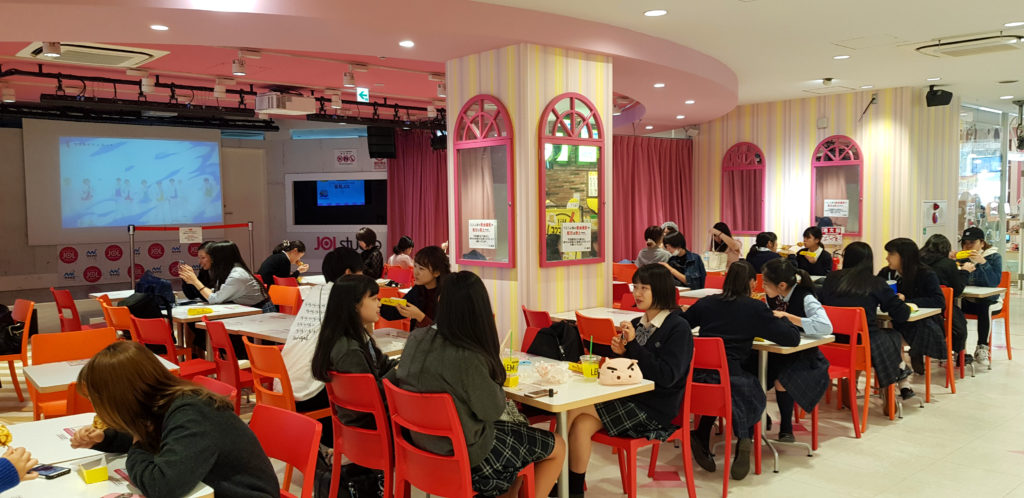
In the morning you will explore the Shibuya and Harajuku neighborhoods of Japan. Leave your luggage at the hotel so you can pick it up when you’re ready to leave Tokyo. The first stop will be the Meiji Jingu park and shrine. You can either walk there in 30 minutes from your hotel and see more of the area or take the subway to Yoyogi Station (change subway line at Yotsuya station) and reach the park in 20 minutes.
After a nice walk in the forest, you reach Meiji Jingu in the middle of the park. Meiji Jingu is a Shinto shrine dedicated to the spirits of Emperor Meiji and his wife Empress Shōken. The shrine itself is not big, but the park surrounding it is.
Slowly make your way south and exit the park at the eastern side to visit Takeshita Street in Harajuku, a neighborhood known for its colorful streets and youth fashion. All around you, you will find crêpes and bubble tea shops. Inside the malls, there are some very picture-worthy seating areas where you can enjoy a drink. I feel conflicted about the ‘fashion’: some of it was colorful, but many stores sell brownish tapestry-like dresses.
Walk to the area northwest of Shibuya Station to see the famous Shibuya Crossing and to go shopping in the area. In front of Shibuya Station exit A8, you can find Hachikō Memorial Statue, a statue for the Akita dog that was known for his loyalty for his owner.
When you’re ready to leave Tokyo behind (at least for now), take the subway back to your hotel to pick up your luggage. From there, take the subway (Marunouchi line) to Tokyo Station and get on the Shinkansen to Hamamatsu.
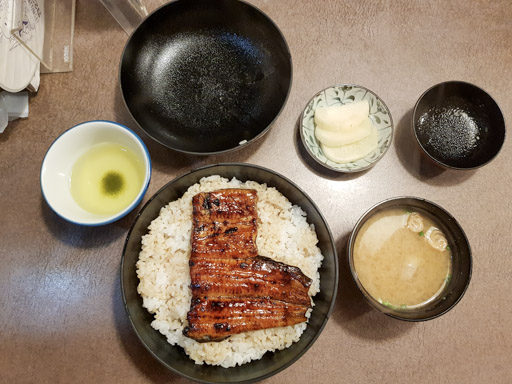
Why Hamamatsu? Because it is known for its Unadon dish: steamed white rice with grilled caramelized eel. Easily one of my favorite Japanese dishes. Plus it is great fun visiting a city other tourists don’t go to. At a 2-3 hour distance from the hotel in Tokyo, it is the perfect distance to cover after spending the morning and part of the afternoon in Tokyo.
As you walk from Hamamatsu train station to your hotel in ten minutes, you will pretty much cover the city center and ‘shopping’ area. When you go out again for dinner, you can explore the rest.
Where to stay in Hamamatsu
Hamamatsu is a backwater city, but perfect for one night and an evening enjoying the local specialty: Unadon.
A good budget-friendly hotel is Kuretake-Inn Central Hamamatsu. Nothing fancy, but it has all you need for one night: clean rooms and a basic Japanese and Western buffet breakfast. At ~35 EUR per room per night that is a bargain.
Himeji
Traveling time: 2 hours 20 minutes by train to Yamazaki Whisky Distillery; 1 hour 30 minutes by train and Shinkansen to the hotel in Himeji
Day 3: Yamazaki Whisky Distillery, Himeji Castle
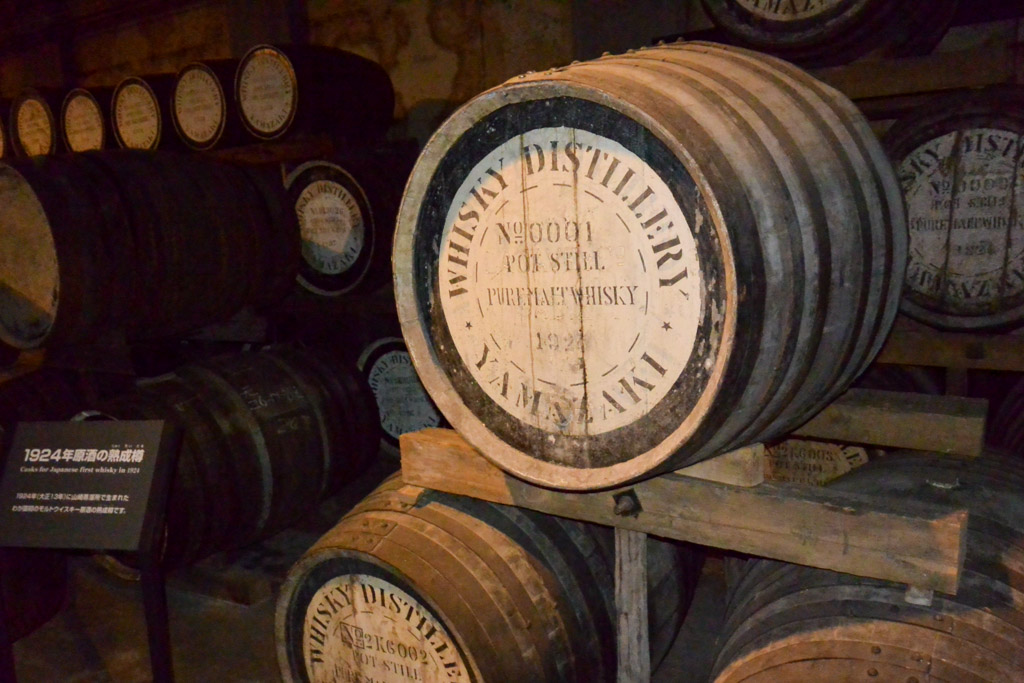
If you like whisky, then today will be a treat as you will visit Yamazaki Whisky Distillery. For those of you who don’t like whisky: just go to Himeji directly to explore the castle and use the bicycles of the hotel to see more of the area.
The Distillery is at a ten minutes’ walk from Yamazaki Station. You can leave your luggage at the front gate for safekeeping.
A visit to Yamazaki Whisky Distillery is only allowed if you have a reservation. You can book either a free tour or one of the paid tours up to two months in advance. I recommend “The Story of Yamazaki” tour (daily 13:00 – 14:40, not available between January 8 and March 31, 2020) as you will be able to see the production process. The tour is in Japanese, but you can download the Audio Guide App in English, Chinese and French. If you are under the age of 20 or traveling with kids, then you can only visit the museum, shop and tasting counter. That’s what the website says at least, there were young kids going into the distillery on my tour.
You can find more information about the tours and closing days on the Yamazaki Whisky Distillery website.
Behind the tasting counter, you can visit the whisky gallery. This is the best spot for taking pictures.
Yamazaki Whisky Distillery tasting
At the end of the two paid tours, they’ll let you taste some of their younger whiskys (Hakushu and Yamazaki) for free. You can make your way to the tasting counter afterward to try some more (paid). I used this opportunity to try the 25-year-old Hakushu and 25-year-old Yamazaki.
Unexpectedly, they tasted awful! The 18-year-old versions are the best they produce, but something went wrong in the seven years after that. This really surprised me. So if you have never tried the 18-year-old and 25-year-old versions, then I recommend tasting the 18-year-old ones. They also have some grain-based drinks that taste really good. Enjoy!
To Himeji
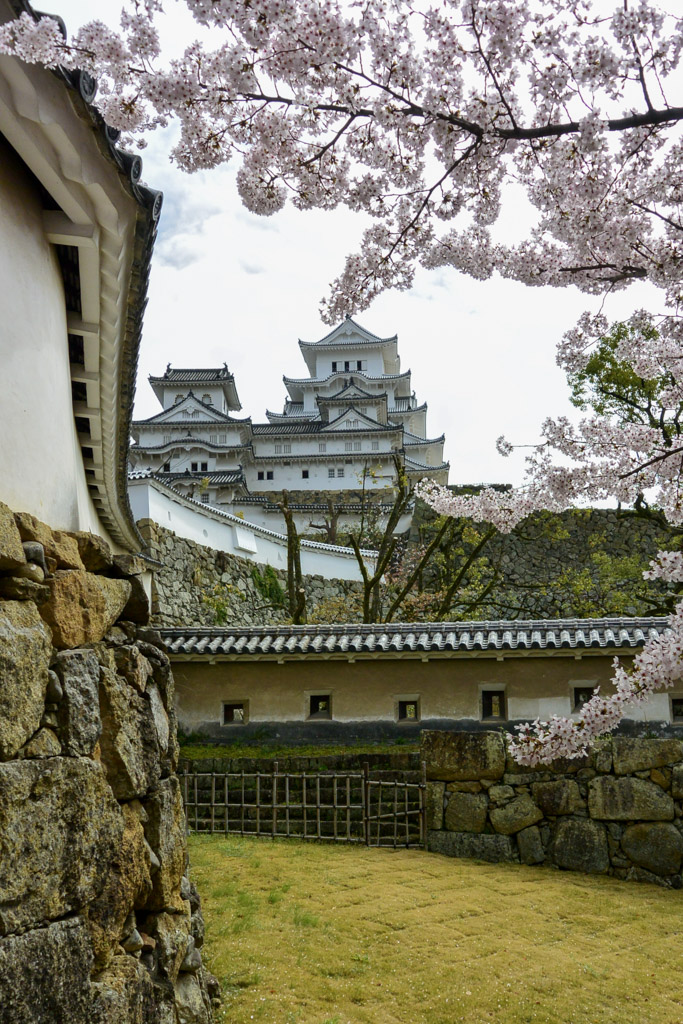
Pick up your luggage after your visit and take the train and Shinkansen to Himeji Station. Your hotel is only a ten minutes’ walk from the train station and leads you through the main shopping and restaurant area in the center of Himeji.
Himeji castle, the attraction Himeji is best known for, is only a five minutes’ walk from your hotel. This white castle is especially beautiful in the cherry blossom period. When I visited there was some festival going on with music performances, lots of sake and snacks.
Where to stay in Himeji
Hotel Wing International Himeji is a good budget hotel at a prime location close to Himeji Castle and the covered shopping street running from Himeji Station to Himeji Castle.
Fukuoka
Traveling time: 2 hours and 50 minutes by train and subway to Fukuoka.
Day 4: Hakata Ramen, Fukuoka Canal City, Hakata Train Station, Fukuoka Castle Ruins, Nakasu Street Stalls
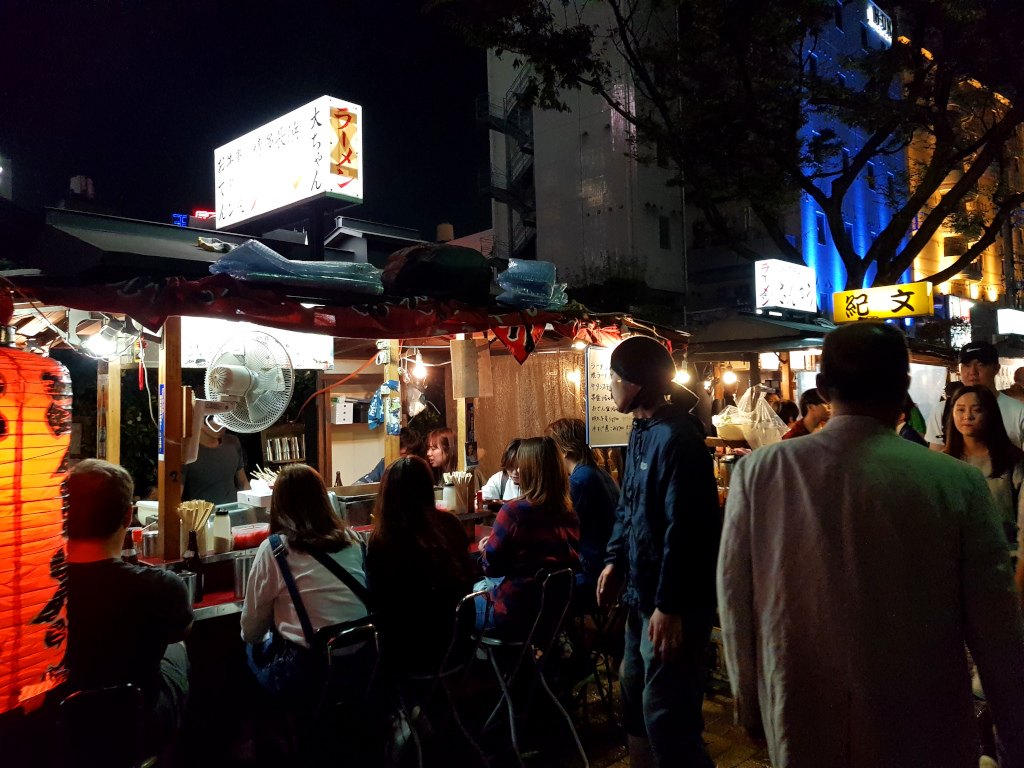
Take the train to Fukuoka’s Hakata Station and from there the subway to Nakasukawabata Station.
When you get off the subway you’re right in front of Ichiran’s Tenjin branch where you can eat the local specialty after checking into your hotel: Hakata Ramen; the pork noodles soup from the Fukuoka area.
Forwarding luggage
The luggage forwarding service is very popular in Japan. It is cheap, yet costs too much for everyday use (unless you prefer more luxurious travel and allocate a budget for it). The costs depend on the size of your luggage and the forwarding distance. For a 75cm suitcase, forwarding costs about 15 EUR/USD.
As you will visit Mount Aso tomorrow directly from Aso train station, I recommend using the luggage forwarding service today. Your hotel can probably send it for you or direct you to a convenience store nearby. Make sure to fill in the forms and drop off your luggage before 4 PM. Keep an overnight bag / small travel bag with you for tonight and tomorrow.
Exploring Fukuoka
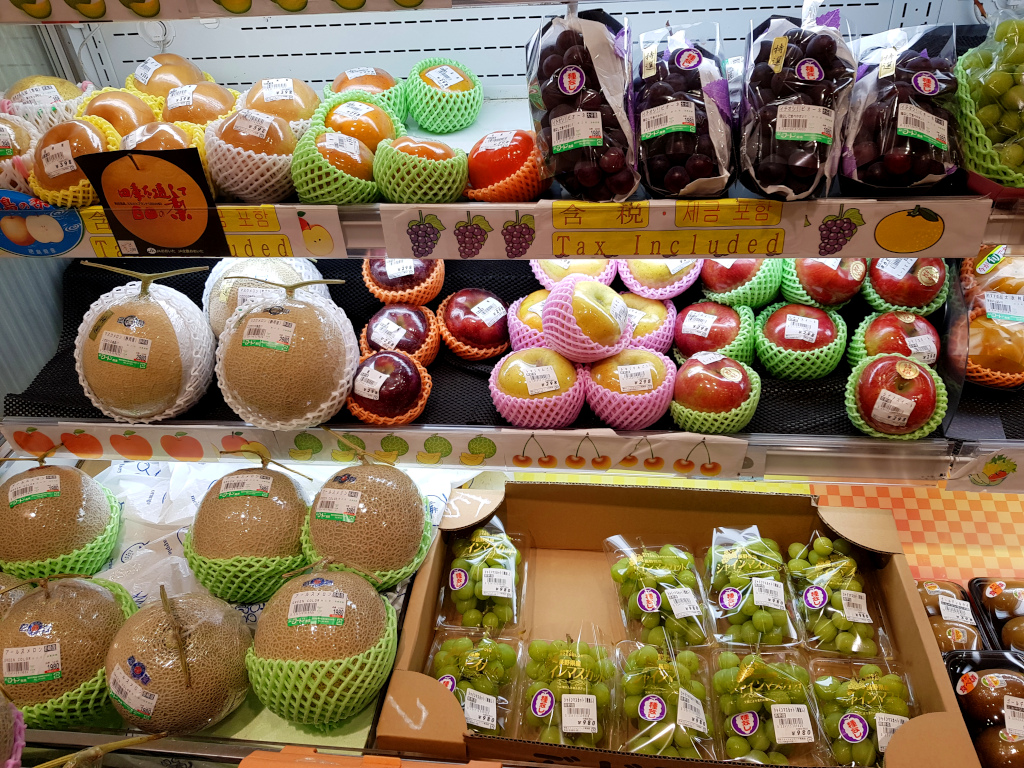
Visit Canal City shopping mall in the morning and continue your shopping spree at Hakata Train Station. If you’re planning to buy some very touristy Japanese souvenirs for your loved ones, then this is one of the best places to do so on this trip. It’s not a good idea to buy the heavy stuff yet but some regional sheet masks, socks, t-shirts, and KitKats shouldn’t weigh you down too much.
Afterward, head over to the nearby castle to explore Fukuoka Castle Ruins and Ohori park.
Slowly make your way to the harbor so you can view the city from high above from the observation deck of Fukuoka Tower. You can buy your ticket in advance so you won’t have to wait in line.
Dinner tonight is at the Nakasu Street Stalls (Yatai). These stalls are located along the canal and attract a lot of people at night. Some of the dishes you can try here are yakitori (grilled chicken skewers), oden (hot pot noodles), a variety of dumplings, and Hakata Ramen. Just take a seat at one of the stalls and strike up a conversation with the people around you.
Also read: How to spend one day in Nagasaki
Where to stay in Fukuoka
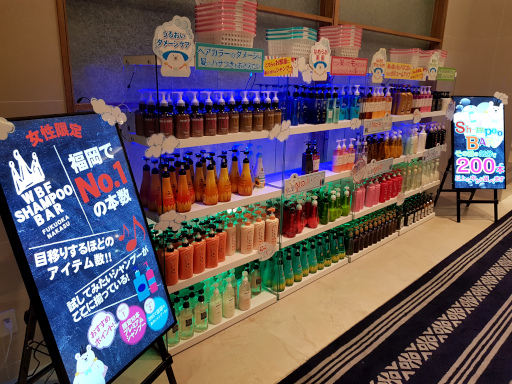
My second time in Fukuoka I stayed at Hotel WBF Fukuoka Nakasu near Nakasukawabata subway station in the Tenjin area. This hotel is within walking distance from Ichiran, the food stalls, Canal City, and Hakata train station. I enjoyed my stay at the hotel after an initial discussion about the price; they had to call some people to confirm the amount on my booking reservation over the amount they usually charge.
In the lobby of the hotel, you can choose your shampoo and conditioner for the night, which is a very nice touch and a good opportunity to try Japanese brands. The rooms were clean and because I booked a twin room, big enough for two people and two suitcases.
A slightly cheaper option that I used on my first trip is Hotel MyStays Fukuoka Tenjin. This hotel is in the same neighborhood and offers clean rooms. Nothing special, but a very good option if you’re not planning on spending any time inside.
Aso
Traveling time: 3 hours 20 minutes by subway, Shinkansen, train, and bus to your hotel in Aso.
Because the weather was bad on my first visit to Aso (I couldn’t even visit the crater!), naturally I had to return to Aso. The account in this itinerary is from the second time I visited Aso. On this trip to Kyushu, I used a rental car, but I’ll assume travel by public transport for this itinerary.
Day 5: Mount Aso
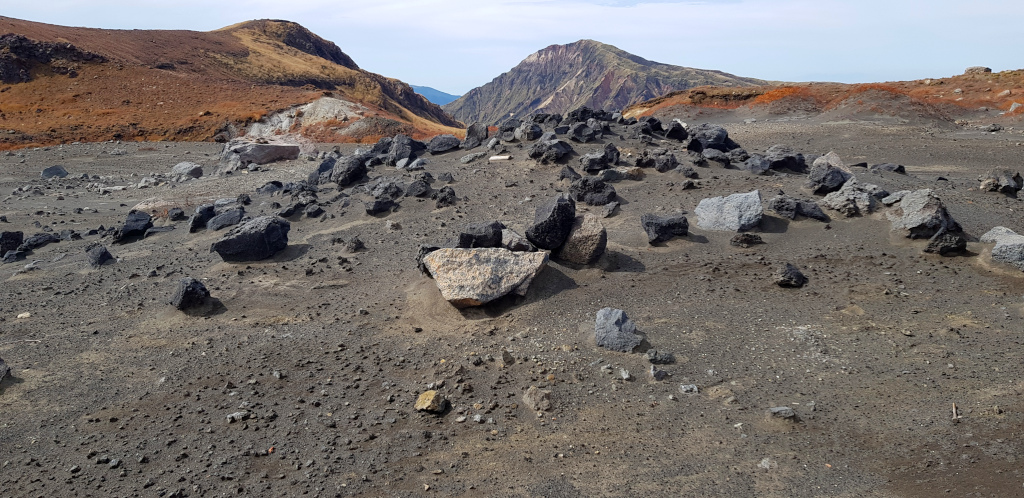
Take the Shinkansen from Hakata station to Kumamoto station and switch to the smaller JR train to Aso Train Station. For those of you who love Harry Potter: if the sky is grey and cloudy, this feels like you’re taking the Hogwarts Express.
Take the bus from Aso Train Station to Asosan-nishi station. In about thirty minutes this bus takes you to the crater of Mount Aso. Keep an eye on the time as the bus only goes seven times a day and the last bus leaves the crater at 16:25.
Mount Aso is the largest active volcano in Japan and one of the biggest calderas in the world. One of the peaks, Nakadake, continuously emits smoke and you will need to check the current status to see if you can visit.
There are many walking paths at the top that you can take to see more of the area. I especially liked the view of the mountains from a path of dark sand and rocks with tiny orange bushes.
Back at Aso Train Station, you can catch a bus to your hotel.
Day 6: Takachiho Gorge, Amano Iwato Shrine, Amano Yasukawara
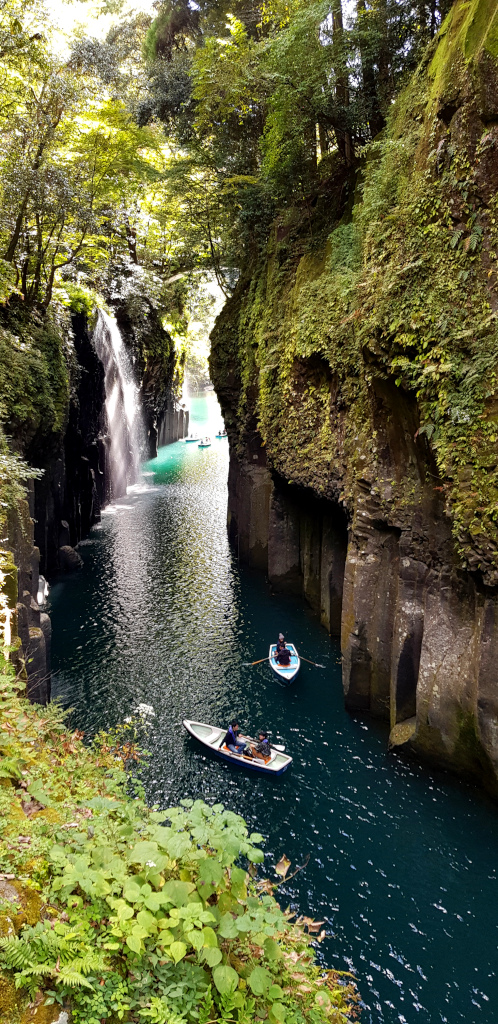
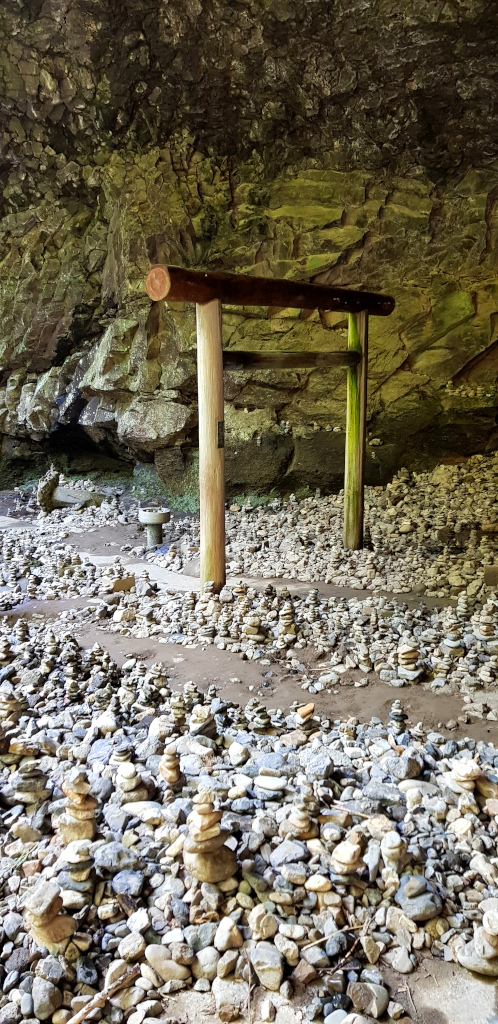
Takachiho Gorge and the shrines are some of the sites you simply can’t miss around Aso. After the 2016 earthquake, it became a bit harder to visit the sites on your own, but you can still join a tour. Unfortunately, you can’t get to the starting point in time by train, so you’ll have to take a cab to Higo-Ozu train station. In the afternoon you can take the train back to Aso.
Alternatively, you can take the bus from Tateno to visit Takachiho Gorge. This will require good timing as there are only two buses a day. Another bus can take you from Takachiho Gorge to the shrines and back again (once every 1-2 hours).
Takachiho Gorge is best known for its very blue water surrounded by high cliffs. You can take a boat and watch the gorge from below or walk along the stream for a different perspective.
Near Takachiho Gorge you can visit Amano Iwato Shrine and Amano Yasukawara. Both shrines are at a beautiful location along a stream, surrounded by trees and make you feel like you’re far away from society.
From Amano Iwato Shrine you follow the path lined with shops (take-out ice cream) and a stream resembling a mini Takachiho Gorge to a remote temple (Amano Yasukawara) built in a cave. In the cave you can see the wooden shrine and many piles of stones, making you feel like a recluse at the perfect photo stop.
Where to stay in Aso
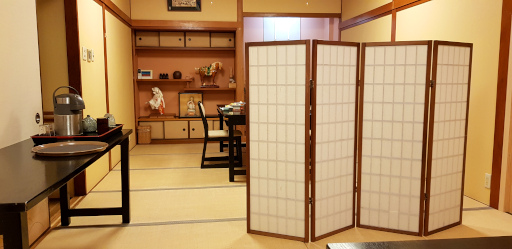
I recommend Tsuruya. A small word of caution ahead: this is not a budget option. This is the luxury stay I always treat myself with once or twice every trip. I rented a Japanese room with a private hot spring bath in the garden and a multi-course breakfast and dinner included.
And it was worth it. A very relaxing stay where everything is taken care of. Lots of space for moving around and a hot spring resort experience (that is not a thousand euros per night) at a traditional Japanese house.
On another trip to Japan, I stayed at a hotel across the street. Both hotels provide a similar experience. So, see if you can book one nice hotel in the Aso area to treat yourself for a trip going well.
Yufuin
Traveling time: 2 and a half hours by bus
Alternatively, you can stay in Beppu and visit Yufuin as a day trip.
Day 7: Tadewara wetlands, Yufuin
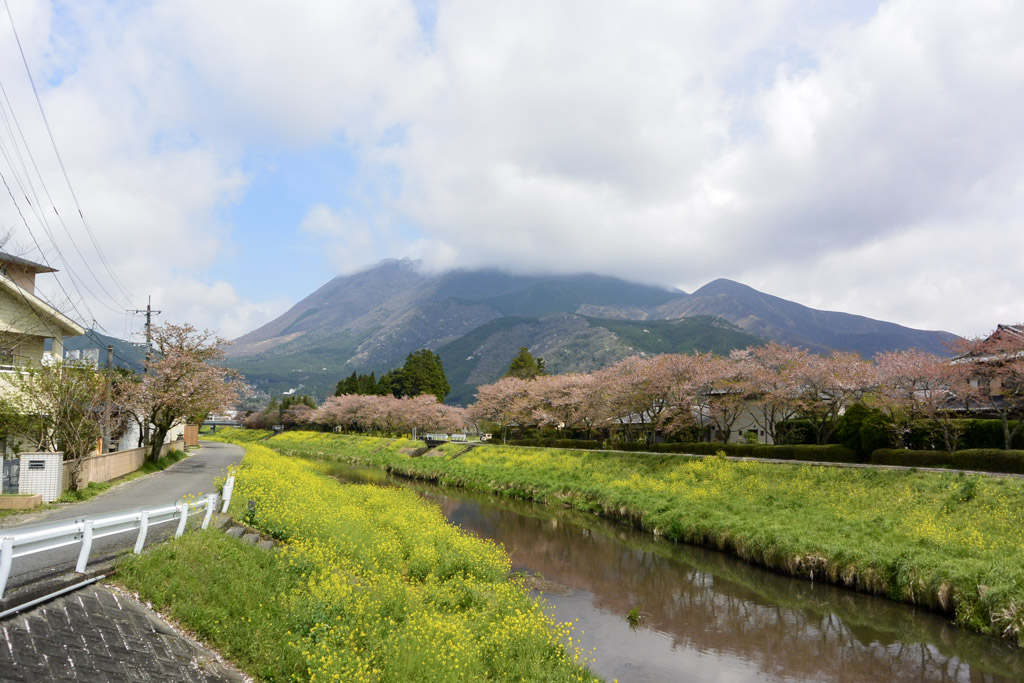
At Aso train station, you can take the bus to Yufuin. This bus takes you on a sightseeing tour over the mountain pass through the Kuju Mountains. Halfway you can get off at Chojabaru Visitor Center for a short walk through the Tadewara wetlands. From the wooden boardwalk, you have a good view of the mountain range and you can try to spot some birds in the reeds. Or you can go for a longer hike, it’s all up to you!
You have to reserve your seat on the bus in advance (two reservations if you want to get off the bus to visit Tadewara wetlands).
Explore Yufuin’s Yunotsubo Street in the afternoon. Yufuin basically has one shopping street with stores selling handicrafts and food. At the end of this street, you will find Kinrin Lake in front of Mount Yufu marking the end of the town. Yufuin has a very artistic feel to it and there are many museums to visit.
The town is best known for its hot springs. So make sure to book the right hotel to make optimal use of the healthy natural springs in Yufuin!
Day 8: Day trip to Beppu
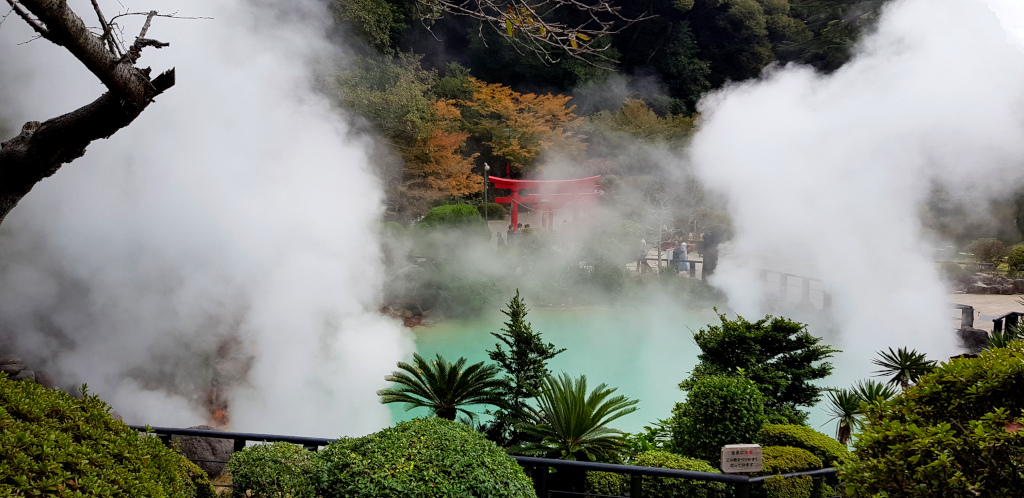
Take the same bus line as yesterday to the Kannawa Onsen bus stop in Beppu.
Kannawa Onsen is the starting point for a visit to most of the Beppu hells. You can buy a passe-partout for all hells at any of the Hells for 2100 Yen.
In no particular order you will visit:
- White Lake Hell (Shiraike Jigoku): a milky white pond with a small garden surrounding it.
- Mountain Monster Hell (Onimaya Jigoku): a small pool with crocodiles in tiny cages. Skippable!
- Cooking Pot Hell (Kamado Jigoku): small green pond where you can enjoy a food bath and eat steamed egg and tofu.
- Mountain Hell (Yama Jigoku): small pool with animals in small cages. Not worth a visit in my opinion.
- Ocean Hell (Umi Jigoku): a beautiful pond with tropical blue color.
- Monk Hell (Oniishibozu Jigoku): mud pools with bubbles. A very interesting Hell to visit.
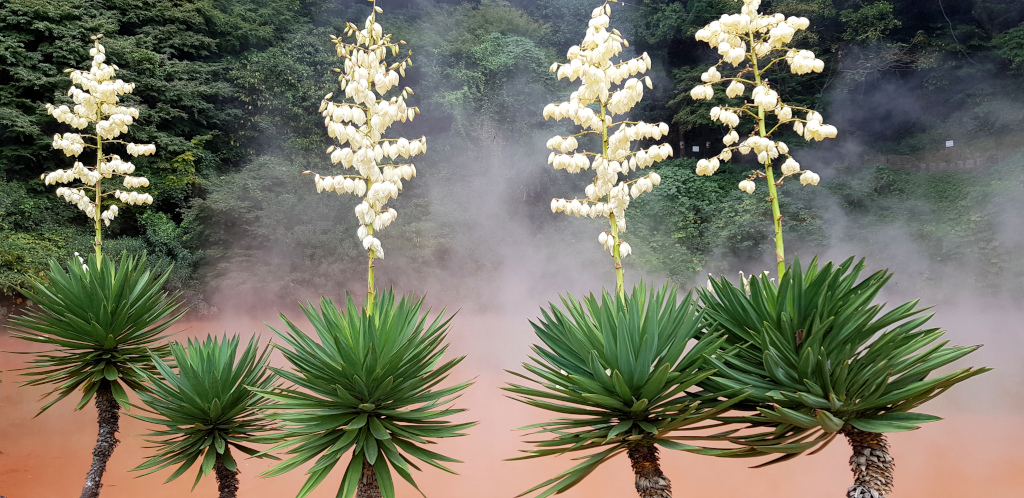
After visiting these five hells of Beppu, you can take the bus or walk in thirty minutes to the location of the remaining two hells. I recommend walking, as the path will lead you through a quiet Japanese neighborhood with many things to see.
The remaining two hells:
- Blood Pond Hell (Chinike Jikogu): a hot, red pool with beautiful plants at the edge. This one is great for taking pictures.
- Geyser Hell (Tatsumaki Jigoku): a boiling hot geyser that sprouts twice per hour.
All Beppu Hells have good souvenir shops, but the best are at these last two hells. This is where I bought my very own red demon amulet that decorates my Christmas tree in December.
You can buy a ticket for all Beppu Hells for 2100 Yen or pay 550 Yen entrance fee per hell. I think most of the hells are worth visiting, so buying a combined ticket is cheaper in the end.
After visiting the Beppu Hells you can catch the bus back to Yufuin from Kannawa Onsen bus station (make sure to reserve your seat).
Also read: Kyushu and Yakushima itinerary
Where to stay in Yufuin
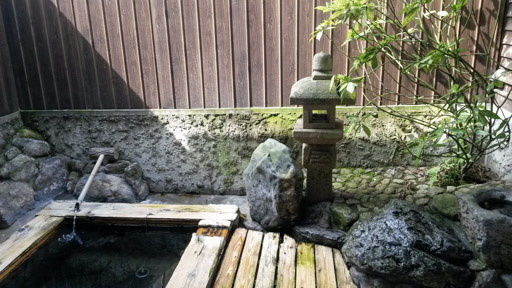
Hasuwa Inn is situated 50 meters from the Oita river at a 10 minutes’ walk from Yufuin Station. This ryokan offers modest Japanese rooms and basic Japanese breakfast at a good price. Why should you absolutely stay at Hasuwa Ryokan? Because of its beautiful outdoor hot spring baths. You can go to one of the two baths and lock the door for privacy. Now you (and your party) can enjoy the small bath in the open air.
Where to stay in Beppu
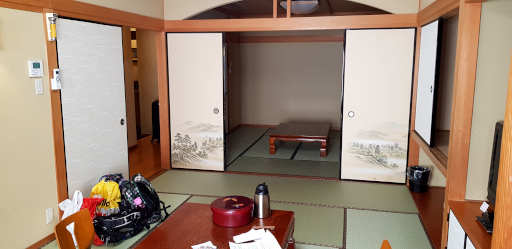
I stayed in a Japanese room at Umikaoru Yado Hotel New Matsumi. The Japanese room is very big: you get two rooms basically. The hotel has public hot spring baths and free breakfast is included.
The hotel is at a very good location near Beppu train station and bus lines to Kannawa Onsen. You will find yourself surrounded by awesome small bars and pubs for dinner. Another thing worth mentioning: one of the staff members spoke very good English. I was really impressed. I don’t know if she will be there during your visit but for us, it meant a very smooth check-in experience.
Hiroshima
Traveling time: 3 and a half hours by train, Shinkansen, and tram or bus.
Day 9: Hiroshima Memorial Peace Park, Hondori Shopping District
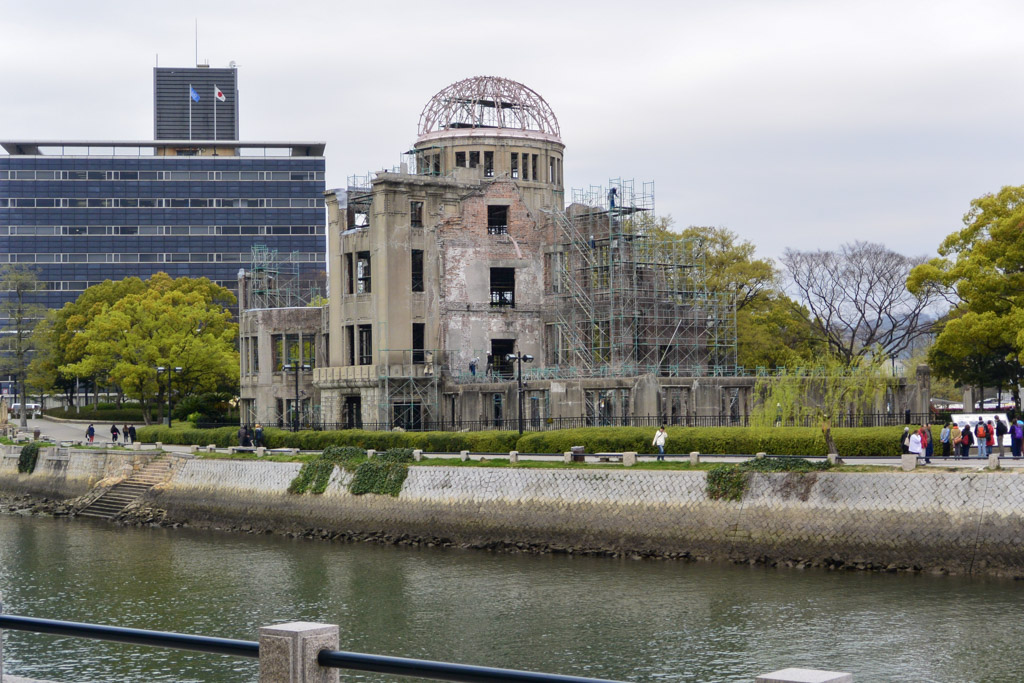
Take the train from Yufuin station to Kurume Station and from there the Shinkansen to Hiroshima Station. Alternatively, you can take a longer route (+30 min) and switch trains at Oita Station and Kokura Station so you can see what the northern coastline of Kyushu Island looks like.
From Hiroshima station, you can catch the bus or tram to your hotel. My Pasmo/Suica card didn’t work on this bus, so keep some change on you as a precaution.
Hiroshima is probably best known for being hit by an atomic bomb during the Second World War. But Hiroshima is more than just a target of a past war. It is a modern city with a vibrant shopping area.
Still, you probably won’t be visiting Hiroshima if you’re not interested in seeing the Hiroshima Memorial Peace Park. You will see thousands of folded cranes and read about personal experiences. The most iconic building is the ruin of the Hiroshima Prefectural Industrial Promotion Hall also known as the Peace Memorial. This building was the only structure left standing near the bomb’s hypocenter.
Hiroshima is also a good city for shopping. What surprised me the most about this city were the outfits of the people: they were more colorful than the grey/black suit ocean you see in other Japanese cities. Enjoy your evening at Hondori Shopping District.
Where to stay in Hiroshima
I stayed at Hotel Sunroute Hiroshima (now called Sotetsu Grand Fresa Hiroshima) across the bridge from Hiroshima’s Memorial Peace Park at what I believe to be the best location to stay in Hiroshima. From here everything is within walking distance. The rooms were comfortable and the breakfast buffet at this hotel was very good.
Osaka
Traveling time: 45 minutes by bus, train, and ferry to Miyajima and two hours by train to Osaka.
Day 10: Miyajima, Osaka Dotonburi
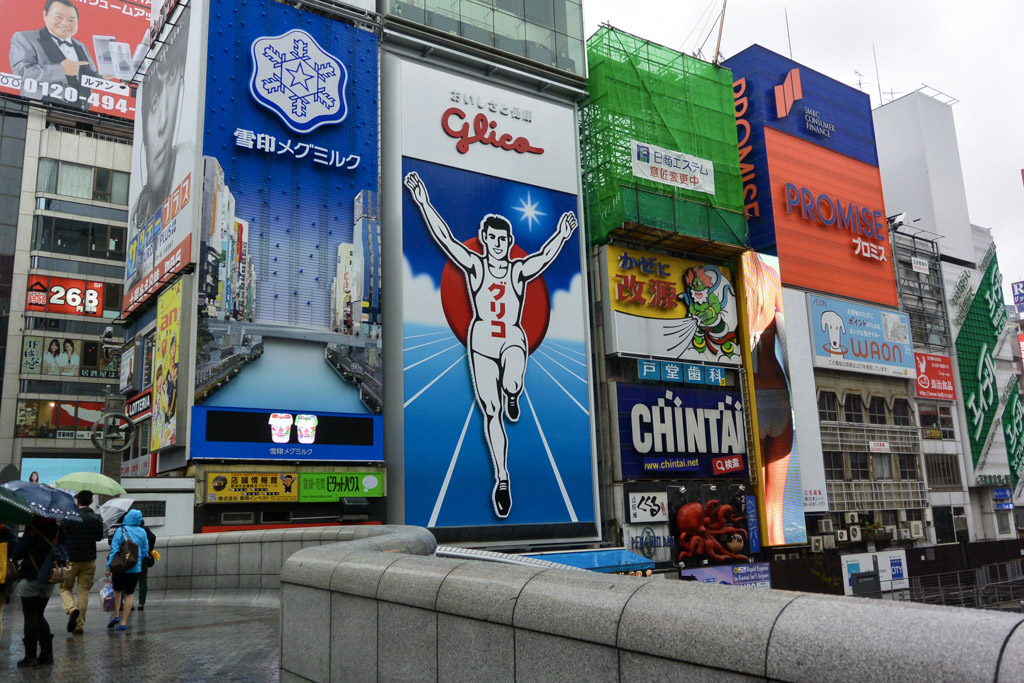
With a thirty minutes’ train ride from Hiroshima Station, you can reach Miyajimaguchi Station. See if you can leave your luggage at Hiroshima Station to pick up after you return from Miyajima.
Miyajima is a small island (also called Itsukushima) known for its forests and shrines. The most famous site is probably the great Torii Gate just offshore. With high tide, this shrine is partly submerged.
On the island, you can take one of the many hiking trails that will show you the most beautiful sites. With a two hour walk, you can hike to Mount Misen for a nice view. If you feel less active it is also possible to take the Miyajima Ropeway that will take you very close to the summit.
Head back to the mainland and make your way to Shin-Osaka Station after picking up your luggage at Hiroshima Station.
The evening is for exploring the Dotonburi area near Nambo subway station. This is where the neon billboards are that you see on nearly every photo of Osaka. It is a very touristy place and the prices of meals at the restaurants are higher than in other areas in Osaka but it is still fun to visit.
Day 11: Daytrip Kyoto, Fushimi Inari, Golden Pavilion, Geisha district
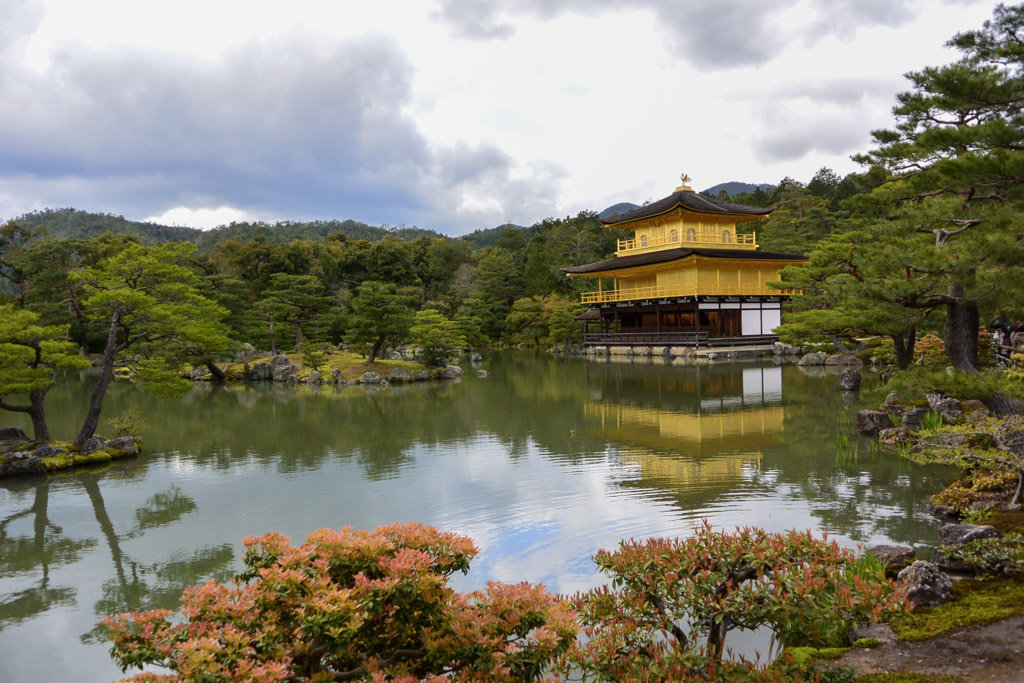
Tip: send your luggage to the hotel in Nakatsugawa so you won’t have to bring it with you on day 12.
Today you will go on a cultural day trip to Kyoto. This city has great historical value. Not only because of the many temples, shrines and historical places but also because it is the former capital of Japan.
Kyoto is a very popular tourist destination. After exploring Kyushu for a week you will notice the difference as all the must-see sites in Kyoto are very crowded. Catch an early train from Osaka and decide which tourist site is most important to you so you can go there first thing in the morning to beat the crowd. I chose Fushimi Inari.
After arriving at Kyoto Station, switch to the train to Nara for two stops and get off at Inari Station. This station is right in front of the path to Fushimi Inari, an important Shinto Shrine with thousands of vermilion Torii Gates. Walk under the gates until you find a quiet spot without people to take beautiful pictures or go all the way up the mountain for a view of the city from above.
From Fushimi Inari you can take the train back to Kyoto Station and hop on the bus that takes you to Kinkaku-ji (Golden Pavilion) in the northern part of Kyoto. The beautiful pictures tourists bring back from this place never show the huge crowd trudging along the path set out for them. But as with Fushimi Inari, the view of the golden pavilion is worth it.
Hop on the bus again to visit the Kyoto Imperial Palace where the emperor resided between 794 and 1868. This palace and garden still show the serenity that the modern part of Kyoto lost.
From the imperial palace, you can walk south (or take to bus again) until Hanamikoji Street to visit the renowned Geisha district of Kyoto. It will be easy to spot Geisha’s here (at least in 2015 it was). Please don’t intrude on their personal space and be respectful when you take pictures.
Where to stay in Osaka
Shin-Osaka Sunny Stone Hotel is located near Shin-Osaka Station from which you have easy access to Osaka’s subway network and trains to other cities. It is the ideal base for exploring Osaka and Kyoto, as Kyoto is only a 15 minutes’ Shinkansen ride away. From the hotel, you can walk in 17 minutes to Shin-Osaka Station or take the subway for one stop to get there quicker. The hotel itself is inexpensive and has everything you need for two nights.
Alternatively, you can stay in Kyoto and go on a day trip to Osaka. I chose Osaka because the hotels were more affordable.
Nakatsugawa
Traveling time: one hour by train to Nara and two and a half hours by Shinkansen, train, and bus to Nakatsugawa.
Day 12: Nara
After a short train ride you reach Nara, a city packed with temples, beautiful gardens, and historical sites. Nara, formerly called Heijo, was the first permanent capital of Japan and that is also the reason you can find so many historical treasures in the area.
First head to the Todaiji Temple at the northern side of Nara-koen park. Here you can see the Big Buddha Hall and explore the temple grounds. You’ll also encounter the wild deer roaming the Nara-koen park.
Nearby you can visit Isuien Garden, which integrated Todaiji’s Nandaimon Gate into its beautiful scenery.
If you feel active you can hike up Mount Wakakusa. In fifteen minutes you can reach the plateau and from there it is only half an hour to the top of the mountain. This hike is especially beautiful in April when you can watch cherry blossoms while walking up the grassy slope.
After exploring the southern side of Nara-koen, head back in the direction of the train station for a visit to Kofukuji Temple, the ancient family temple of the Fujiwara clan, built in the 700s.
It’s time to catch the train to Nakatsugawa.
Day 13: Magome - Tsumago Hiking Trail
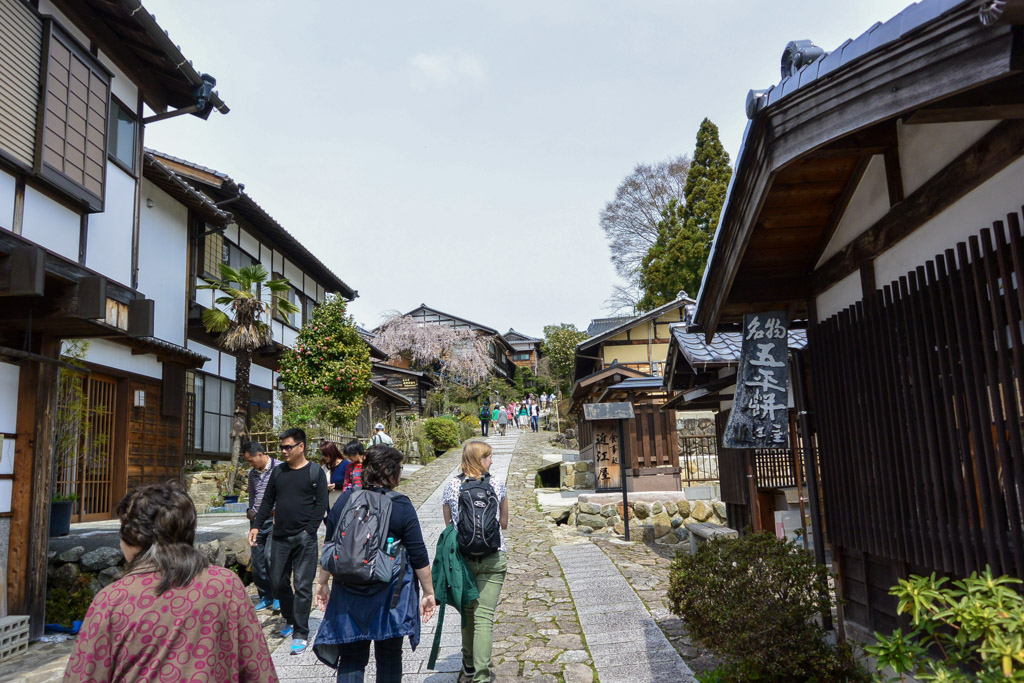
Tsumago and Magome are two of the best-preserved post towns in Japan. When you follow the Magome – Tsumago Hiking Trail, you are following the footsteps of the trader’s of old. Both towns are on the Nakasendo trade route that connected Tokyo to Kyoto in the Edo period.
Take the local train from Nakatsugawa station to Tsumago. Here you walk up the path through the village, giving you the feeling you’ve stepped back in time. At the end of the village, you can start your hike to Magome town or alternatively wait on the road near the bus stop for the bus that will take you there. The buses are infrequent, but I easily saw two in 20-30 minutes. Another possibility is to walk part of the trail and catch the bus at another bus stop (basically whenever the path intersects with the main road).
Magome is much quieter than Tsumago. Whereas Tsumago makes you feel you’re in the middle of a bustling trading town, Magome gives off this remote small-town feeling. That’s what makes it so interesting to visit both.
After exploring Magome you can either hike back to Tsumago or take the bus (the last bus leaves pretty early!). Another tip: if you’re heading back to Nakatsugawa, take a taxi for a scenic route.
Also read: Best Japanese books with English translation
Where to stay in Nakatsugawa
While it might be more interesting to stay in Tsumago, Nakatsugawa is easily the cheaper option. I thought it would be cool to stay in a city where no one ever stays. And it was really funny as I could not find anything to do there at all except for a walk through the neighborhood to explore a city that doesn’t get many tourists (on a rainy day!).
Nakatsugawa is at a very practical location, but it doesn’t make for an interesting stop.
I stayed at Hotel Route Inn Nakatsugawa Inter which was perfectly nondescript and yet a very convenient place to stay at.
Takayama
Traveling time: three hours and fifteen minutes using three trains.
Day 14: Takayama Old Town
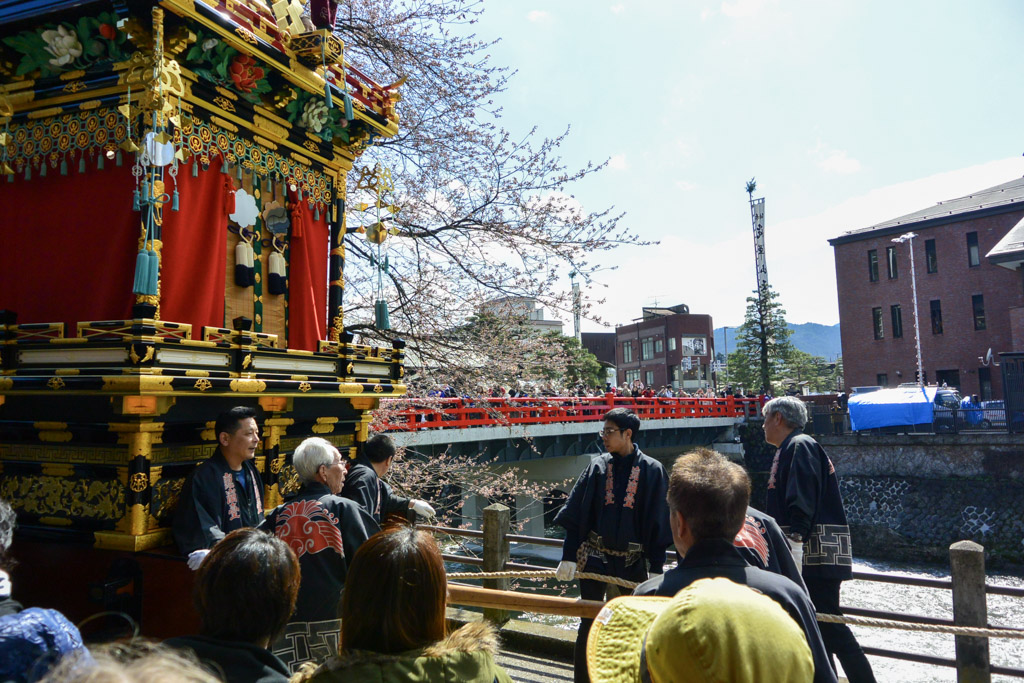
Time to head to Takayama! The train ride to Takayama was easily one of the more interesting ones of my trip. You have to switch trains twice at Tajimi and Minoota, two train stations that are literally in the middle of ‘where am I’ and ‘if I miss the train will I ever get out of here’. But then you get on the third train and the scenery takes your breath away. The train treats you to a sightseeing tour through valleys, along rivers and mountains.
And at the end lies Takayama, a town with beautiful historical buildings, sake and miso shops and most importantly: the Takayama Festival you’ll visit tomorrow.
But for tonight: explore the town and enjoy the many interesting souvenir shops. Further away from the train station you will find the beautifully preserved Old Town, an area with preserved Edo-period houses and the historical quarter for shopping and dining. Here you can visit sake distilleries and shops specialized in miso. Alternatively, there are also some good tea houses if you’re craving something less alcoholic.
Day 15: Takayama Festival and Castle Ruins
Takayama is a beautiful mountain village in the Japanese Alps. The historical houses alone make it worth a visit, but if you time it right you can also enjoy Takayama’s famous festival (in spring and autumn)
At the festival, you can see the festival floats that tour the streets of the Old Town. There are also many performances: plays, music, and dances. Some of them are even performed on top of the festival floats. At the shops along the road, you can buy snacks and drinks.
During my visit, the festivities almost got canceled because of the bad weather. But fortunately, it stopped raining in the afternoon and they could take the festival floats out on the streets.
In the afternoon you can explore Takayama Castle Ruins.
Day 16: Shirakawa-go and Ainokura day trip
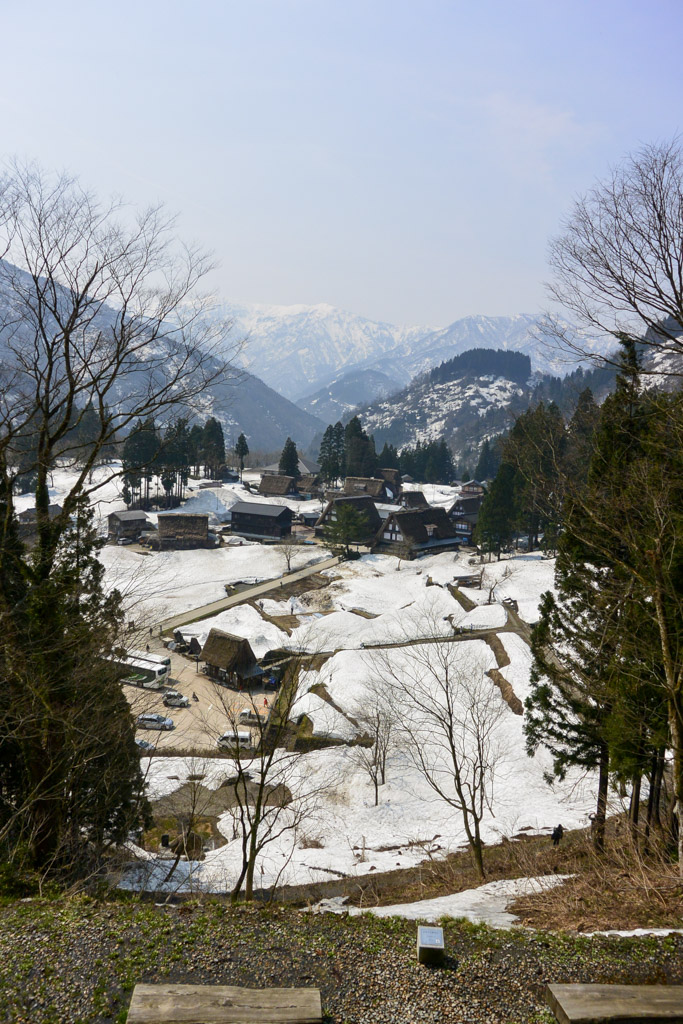
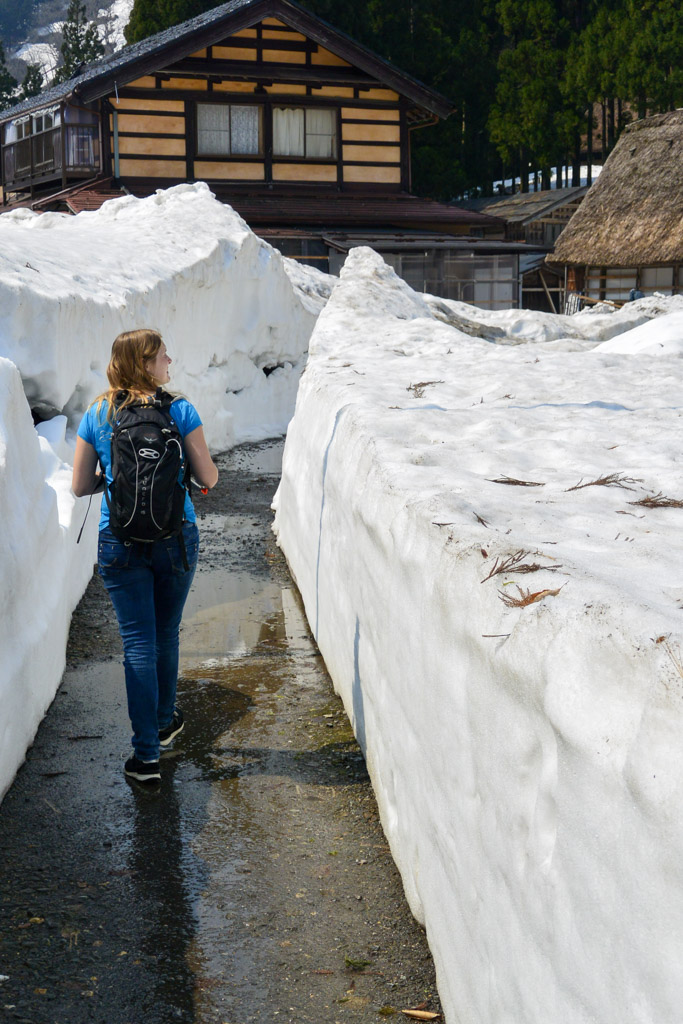
Today you will visit the traditional villages of Ainokura (in Gokayama) and Shirakawa-go, two UNESCO world heritage sites. You can use regular buses to get from Takayama to these villages or join a tour that will help you combine the two world heritage sites.
On the tour, the bus will first take you to Ainokura village. You can take a walk in the village to see the traditional houses (it was 20 degrees Celsius even though you see snow on the pictures) and follow the road to the viewing point to look at the village from above. Compared to Shirakawa-go, this village is very small, but that just makes it very quiet and peaceful.
From there the bus will take you to Shirakawa-go Observatory for a delicious Japanese lunch. At the observatory, you have a good view of the whole village and the rice fields surrounding them.
After lunch, you’ll get some free time in the village. This is the perfect opportunity to buy some souvenirs (like my favorite soba tea) and admire the architecture of the houses. Even though this village attracts many tourists each day, at the outskirts of the village you can still get that small-town feeling.
Near the bus parking lot, you can also visit Gassho Zukuri Folklore Park and observe the traditional houses from within.
Where to stay in Takayama
The ideal place to stay is between the train station and Takayama Old Town: you’ll be right in the middle of all the shops and everything is within walking distance. I stayed at the budget hotel: Super Hotel Hida Takayama. Make sure to book your hotel in time if you’re planning your visit around the Takayama Festival.
Toyama
Traveling time: an hour and a half by train.
Day 17: Toyama Castle and Iwasekoshi beach or a day trip to Kanazawa
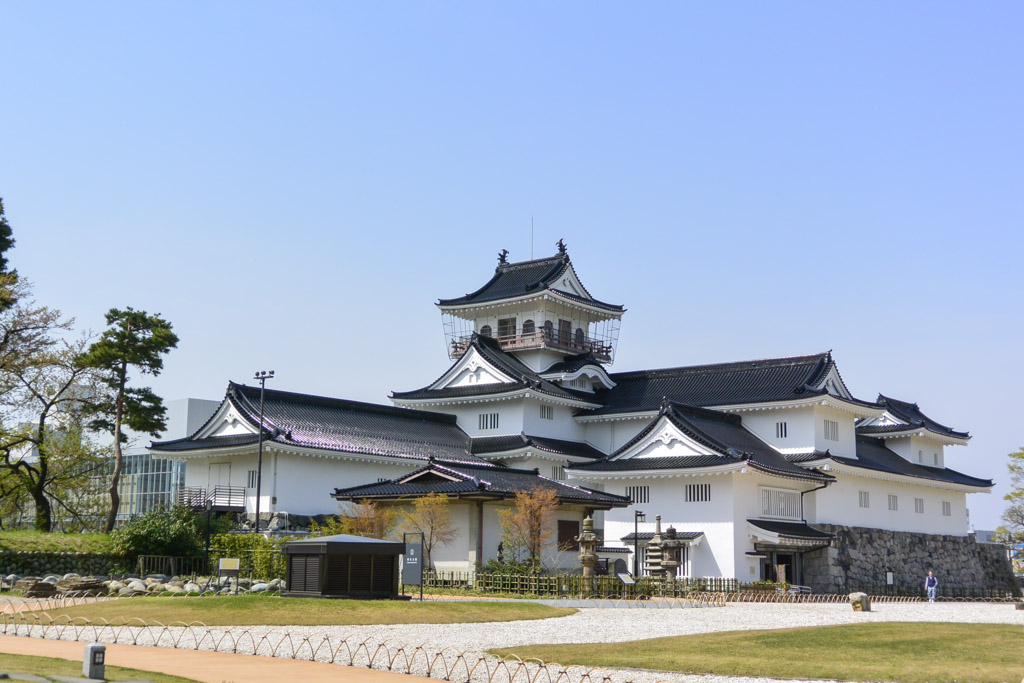
After arriving in Toyama, check-in at your hotel and drop off your luggage at the desk to have it forwarded to your next hotel in the Omachi Onsen area. On day 18, your luggage will follow the same Alpine Route as you, albeit separately so that you can travel lightly and enjoy the trip.
If you want to take a short break from trains and travel, you can spend the rest of this day in Toyama. First head to Toyama Castle in the middle of the city. At the site, there is this lovely area where you can sit down to read a book while sneaking a peek at the castle every now and then.
You can also take the tram to the Iwasekoshi beach north of Toyama. It’s a great place for a quiet and relaxing stroll.
Alternatively, you can take the train to Kanazawa to visit Kanazawa Castle and Kenrokuen Garden, one of Japan’s three most beautiful landscape gardens. This is also a very good spot for watching cherry trees.
Where to stay in Toyama
Because you need to leave early in the morning on day 18 to make it to Tateyama Station (where you start the Alpine Route) in time, the best place to stay is within a fifteen minutes’ walking distance from Dentetsutoyama Station. I stayed at Toyama Manten Hotel which is only an eleven minutes’ walk from the train station and also near Toyama Castle.
Omachi Onsen
Traveling time: an hour by train to Tateyama Station, six hours on the Alpine Route, and half an hour by bus to your hotel.
Day 18: Tateyama Kurobe Alpine Route
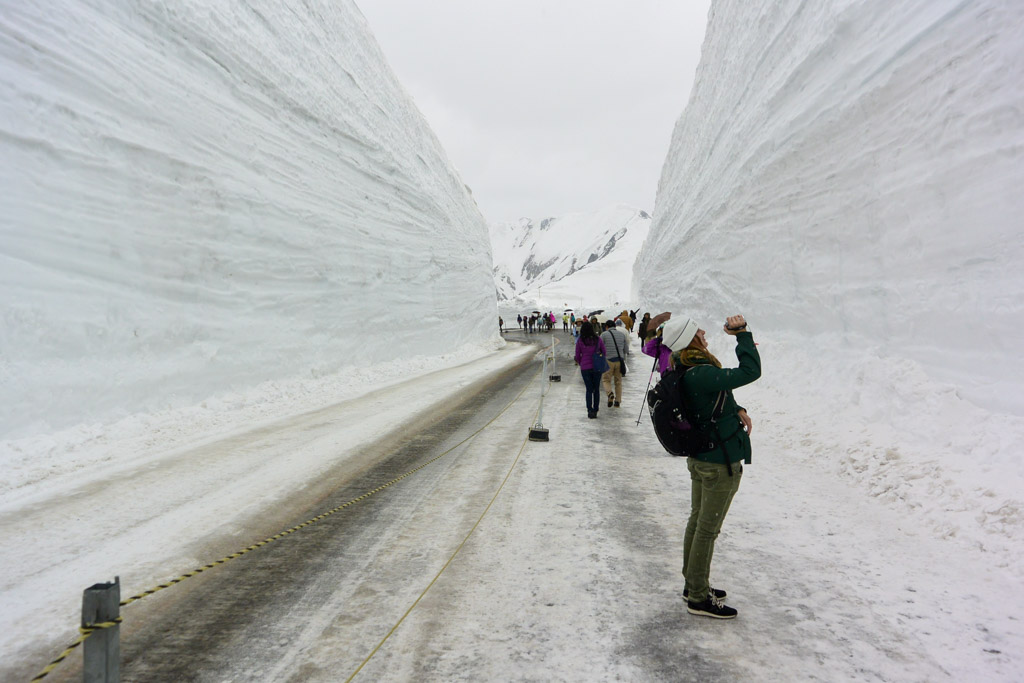
This route is only possible between the second half of April and the end of November each year. Make sure to reserve your tickets in advance, because they only allow a certain amount of people to start the route each hour.
Before the day is over you will have traveled by cable car, bus, tunnel trolley bus, ropeway, cable car, and another tunnel bus. If you do this trip in April, you’ll be able to see the famous snow corridor. It is very impressive to walk in between this 20 meters tall snow corridor.
The first bus takes you to the Midagahara and Murodo viewpoint. During this ride, your bus first towers above the heaps of snow at the side of the road, but slowly the snow corridor will grow taller and taller and tower above the bus. At the viewpoint, it can be below 0 degrees Celsius (-9 on my visit), which can be quite a difference with the 20 degrees in Toyama. Because the temperature will soon rise again after you leave the viewpoint it is fine to go up with many ‘summer’ layers (like a fleece sweater, summer coat, and hat) instead of going full winter gear which you’d have to carry around for many days.
From the ropeway, you have a good view of the mountains and valley. I think this part will be most gorgeous in summer and autumn when the trees have leaves in various colors.
In the end, you get to walk on the Kurobe Dam before you reach the last tunnel bus. The whole route takes about six hours to complete.
Along the route, you can take some time to enjoy the snow or go hiking (again, probably more fun in summer).
At Ogizawa you can catch a bus to the Omachi Onsen area where you can relax in the outdoor hot spring at your hotel.
Where to stay in Omachi Onsen
Finally, another onsen area! See if you can book a hotel in the Omachi Onsen area. This area is easily reached by bus from the end of the Alpine Route. There are many hotels in this area. I stayed at Hotel Karamatsuso: not too expensive, but with a very good dinner and breakfast and two lovely outdoor pools (one for men, one for women).
Matsumoto
Traveling time: fifteen minutes by bus to the train station and an hour by train from Shinano-Omachi station.
Day 19: Matsumoto Castle and town
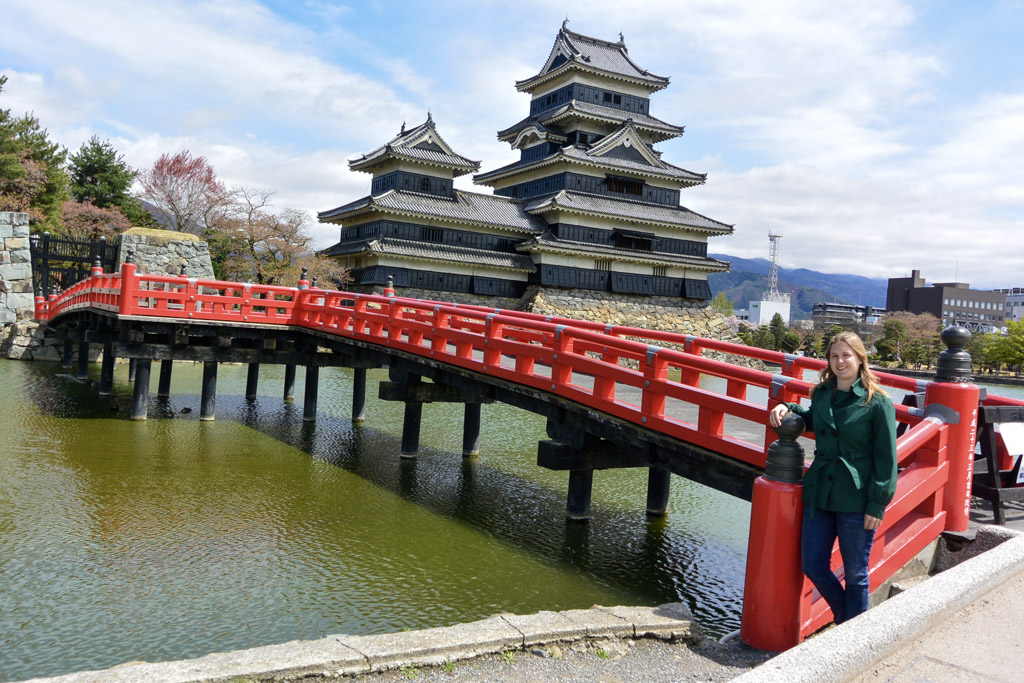
After a day of traveling it is always good to compensate with shorter travel time. Relax in your hot spring hotel until it is time to check out and then catch the bus to nearby Shinano-Omachi Station. From here you can catch the train to Matsumoto.
The highlight of Matsumoto is Matsumoto Castle, my favorite castle in Japan! A beautiful black (crow) castle with a red bridge. Explore all the floors in the castle and take a walk on the castle grounds. As this castle attracts fewer visitors than for example Himeji Castle, it is quite easy to take good pictures without other people obscuring the view.
Nearby you can visit the former Kaichi School, one of the first schools of its kind in Japan housed in an interesting building that now functions as a museum.
You end your day with a soba noodle dish with fresh wasabi that you have to grate yourself. If you order hot sake with your dish, you might end up with fish in your drink. Eventually, the fish will taste of sake and the sake will taste like drunken fish!
Also read: 10 situations to experience in Japan
Day 20: Wasabi farm, Nawate-dori and Timepiece museum
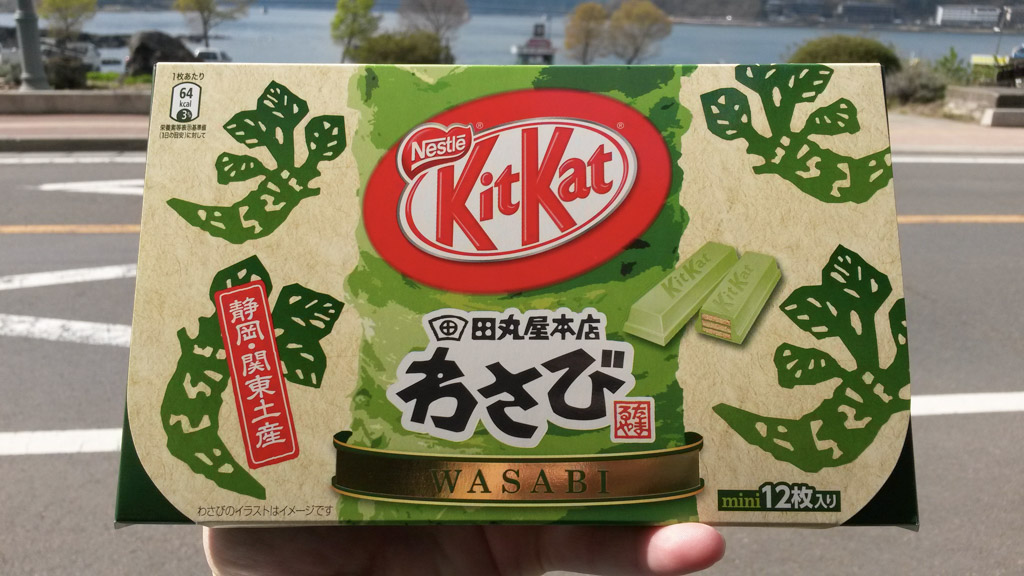
North of Matsumoto you can visit a Wasabi farm. A very unique place to visit, as wasabi is a hard plant to grow. When you order sushi at home, the wasabi you get will most likely be horseradish instead of the real thing. So see if you can get some fresh wasabi with your meal when eating out in Matsumoto.
Take the train to Hotaka Station or Akashina Station and then the bus (or walk) to Daio Wasabi Farm. At the farm, you can see how wasabi is grown and taste a variety of products and meals containing wasabi. Walking trails lead you from field to field along the river stream with water wheels and to the Daio Shrine.
In the late afternoon, you can explore Matsumoto city, go shopping in the traditional shopping street Nawate-dori and visit the Timepiece Museum which houses the largest pendulum clock in Japan.
Where to stay in Matsumoto
Matsumoto Hotel Kagetsu is a hotel very close to Matsumoto Castle and Nawate-dori. There’s also a great soba noodle restaurant around the corner. The train station is only a ten to fifteen minutes walk away. All in all, the perfect location for exploring Matsumoto.
Fujikawaguchiko
Traveling time: three hours and fifteen minutes by train. The hotel can pick you up at the train station or you can walk to your hotel in thirty minutes.
Day 21: Fujikawaguchiko lake and Mount Fuji
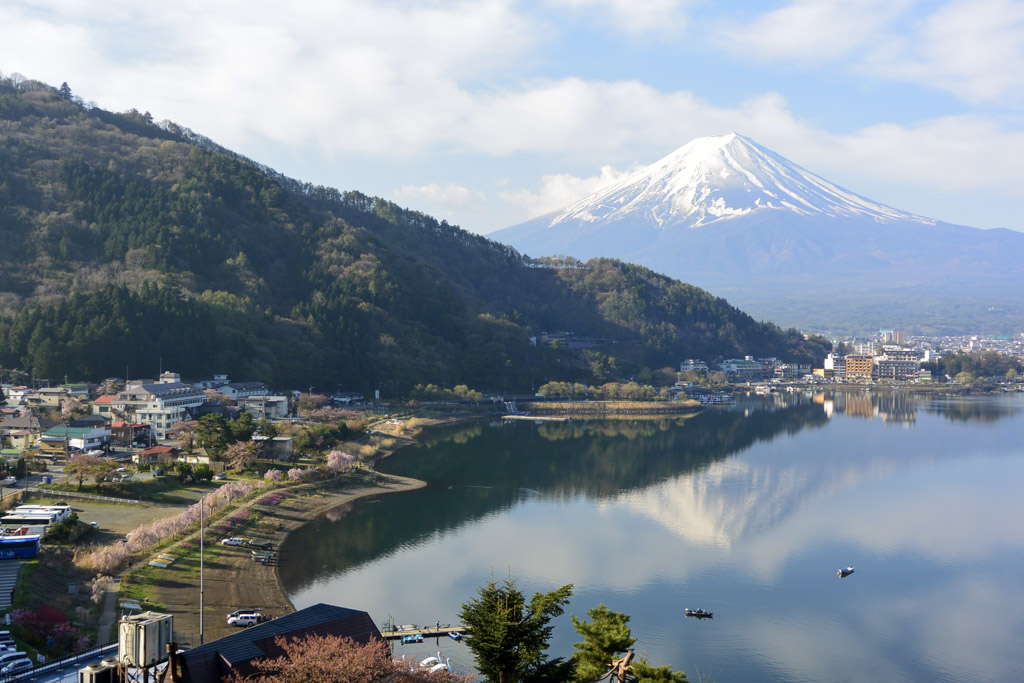
Today you’ll spend some hours on multiple trains, gazing at the beautiful landscape outside. When you arrive at Fujikawaguchiko train station, you can either walk to your hotel or arrange a pick-up. The road along the shore of the lake is lined with many small stores selling fun things and delicacies.
In the afternoon you can take the Mt. Fuji Panoramic Ropeway to the observatory for a great view and some lovely pictures with, for example, Tenjo Bell.
Day 22: Fuji Shibazakura Festival
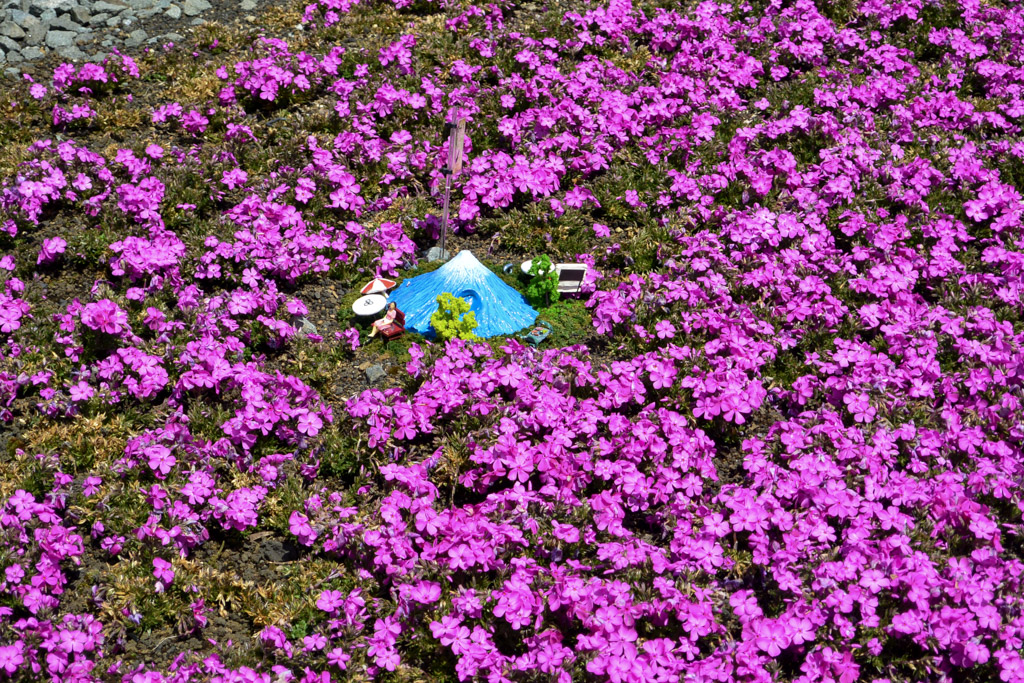
The Fuji Shibazakura Flower Festival is held every year in spring, from mid-April to early June. Near Lake Motosuko, at the foot of Mount Fuji, you can see hundreds of thousands of pink flowers (moss phlox) covering the ground, creating a beautiful pink flower field.
When you go early in the season (I went in the first week) not many flowers will be blooming yet and the field won’t be as pink as weeks later, but the festival is still worth a visit because it just feels good to walk in between flower fields.
At the festival, you can try many flower-themed snacks like ice creams, cakes, and drinks.
To get there you can take one of the many daily buses from Fujikawaguchiko train station.
As this is the last day before returning to the bustling metropole Tokyo, enjoy the peace and quiet of Fujikawaguchiko. Take a stroll along the lake, watch the cherry blossoms, and buy lots of trinkets at the stores that you don’t actually need. When evening falls, head back to your hotel and relax in the hot spring of your hotel before treating yourself to a very good multiple course meal.
Where to stay in Fujikawaguchiko
I recommend staying at the northern shore of Lake Kawaguchiko because you can view both the lake and Mount Fuji from your hotel window or balcony. I stayed at Mizno Hotel, a hotel with a beautiful location on the northern shore. From both my balcony and hot spring bath on the upper floors of the hotel, I had a great view of Mount Fuji. This also resulted in me gazing at the mountain at 4 AM, because that happened to be the hour the sky suddenly cleared and the mountain became visible (during the day there were too many clouds). And I wasn’t the only one! Apparently, other guests were keeping an eye out for the most beautiful view of the lake and mountain.
Mizno hotel is not a budget hotel, but my stay here was one of my favorites of the trip because of the view, the balcony, and the great food they served. Sometimes you should just treat yourself, right?
Tokyo
Traveling time: less than two hours by bus. Alternatively, you can go by train, which takes three hours and fifteen minutes.
Day 23: Shops Tokyo Station, Imperial Palace East Gardens, Ueno Park, Akihabara
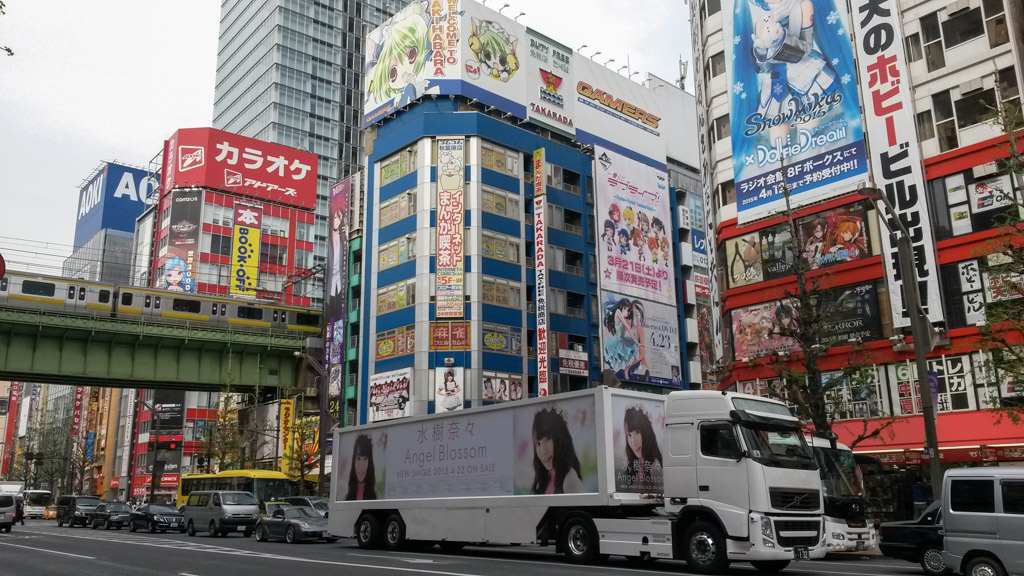
The last day of your trip. There is a direct bus that takes you from Fujikawaguchiko Station to Tokyo Station. Make sure to reserve a seat in advance and enjoy the relaxing ride. This time you will explore the eastern part of Tokyo. You will stay near Tokyo or Ueno train station, so you can easily reach the airport when you leave the next day.
A tip: if you leave Japan the next day, you could consider leaving your luggage in a locker at the train station, so you can immediately explore Tokyo upon arrival without going to your hotel first.
The first highlight to visit is the shopping mall below Tokyo Station: there is this great area with shops selling cute souvenirs from tv shows and anime.
Head west from Tokyo Station to visit The East Gardens of the Imperial Palace. Here you can see beautiful gardens, like Ninomaru Garden, and the foundation of Edo Castle. There are guided tours to the Imperial Palace, but you probably won’t be in Tokyo early enough to use them.
If you have some time left after this, head north to Ueno Station to visit Ueno Park and the shopping area east of Ueno Station. It’s a vibrant shopping area that is neither too modern, nor too oldfashioned but rather just right.
When it gets dark it is time to head to Akihabara; the tech neighborhood of Tokyo. You’re not going here to shop (it’s probably cheaper at home) but to see the huge and colorful neon boards that decorate the streets. You can buy figurines of your favorite animes or try your hand at claw machines. Girls dressed as maids will invite you to visit their maid themed cafes.
This marks the end of your Highlights of Japan itinerary. The Narita Express train can take you from Tokyo Station to Narita International Airport in an hour.
Can’t get enough of Japan? Consider touring Kyushu and Yakushima Island on your next trip to Japan.
Where to stay in Tokyo
Sosetsu Fresa Inn Nihombashi Kayabacho is only one subway ride or a ten minutes’ walk from Tokyo Station; the ideal place to stay when you’re leaving for the airport soon. It’s situated in an office area, so the neighborhood is not very exciting. But it is cheap…
Practical information
Transport
In this itinerary, you will use public transport.
Budget
This budget is based on a three-person party. It will be more expensive if you travel solo and have to pay for your accommodation alone.
Transport
- Japan Rail Pass 21 days: 490 EUR (557 USD) per person. This is assuming you take the bus to Tokyo on day 22 and buy a separate ticket for the Narita Express to the airport on day 23 or 24.
- Bus Fujikawaguchiko to Tokyo: 16 EUR (18 USD) per person
- Shirakawa-go and Ainokura tour: 56 EUR (63 USD) per person
- Tateyama Kurobe Alpine Route: 129 EUR (146 USD) per person
- Also budget 25 EUR (28 USD) for the shorter bus, tram, and subway rides.
- Luggage forwarding service: 30 EUR (34 USD) per person if you use it twice. You can of course use it more often for a more relaxing trip.
Food
- Around 30 EUR daily per person for 23 days: 690 EUR (785 USD) per person
Accommodation
- Around 40 EUR daily per person for 23 days based on low to mid-range hotels: 920 EUR (1046 USD) per person. If you choose cheaper hotels and skip my more luxury choices in Aso and Fujikawaguchiko, you can easily lower this by 100-200 EUR.
Wifi
- 66 EUR (75 USD) in total for 23 days; 22 EUR per person if you’re traveling with two other people. I always order Pocket Wifi via Klook.com as they offer the cheapest Pocket Wifi I can find for many Asian countries.
Entrance fees
- Less than 50 EUR (56 USD) per person
Souvenirs
- As much or as little as you want
Keep in mind that this is just an estimation based on the trip I did in April 2015. It cost me around 2428 EUR (2762 USD) per person for a party of three, including all the above, but excluding intercontinental flights and souvenirs. If you do this trip on a budget (cheaper hotels and food) the total cost will be much lower.
